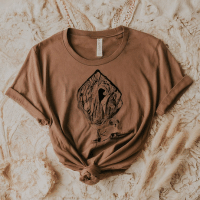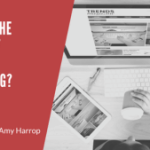 Print on demand (POD) products have been around for a long time. They run the gamut from the expected (t-shirts and mugs) to the surprising (shower curtains and shoelaces) and they’re everywhere. While they’re undeniably popular, you might be wondering if they’re profitable to sell—and where the POD market is headed.
Print on demand (POD) products have been around for a long time. They run the gamut from the expected (t-shirts and mugs) to the surprising (shower curtains and shoelaces) and they’re everywhere. While they’re undeniably popular, you might be wondering if they’re profitable to sell—and where the POD market is headed.
We love creating and selling POD products, so here’s our take on whether you should be creating and selling them, and what you can expect from the market going forward.
How Popular Are Print on Demand Products?
Let’s start with the popularity of print on demand products. There are thousands, maybe even millions of POD products listed on Etsy. Here are a few key statistics from Printful.
 Worldwide, the POD industry has an annual compound growth rate of 25.3%.
Worldwide, the POD industry has an annual compound growth rate of 25.3%.- The United States is the largest market for print on demand products.
- There are a total of 132,700 monthly searches (on average) for print on demand products.
- Customers are willing to pay more when POD products are sustainably produced.
The four most popular print on demand categories are apparel, accessories, drinkware, and home décor. Within the apparel category, favorites include t-shirts, leggings, and sportswear.
What you can see from these numbers is that there is still a huge demand for POD products in the United States.
How to Calculate Profit on Print on Demand Products
Along with the statistics we listed above, Printful also reported on the general profitability of print on demand products. They say that the average profit on POD products is 20%, but that can vary depending on where you sell your products and how much you charge for them.
Here’s a quick run-down of how to price your POD products.
Calculate the cost of creating your design. This may include:
-
 The cost of any design and/or image resizing tools you use
The cost of any design and/or image resizing tools you use- Your time and effort
- Listing fees in your online shop
- Transaction fees in your online shop
- The cost of the product your design is printed on
- The fees for the POD shop
The first two items are the ones where you’ll need to decide how much of your costs to build into your price. If you use free tools, you might not need to worry about the first item at all. A common mistake by online sellers is to neglect building their time into the calculation.
The other items are straightforward. For example, Etsy charges a flat $0.20 listing fee and a 6.5% transaction fee. A lot of POD shops set prices by starting with the basic cost of a t-shirt, mug, or hat, and allowing sellers to build on top of that. Some have a flat percentage they give to sellers; for example, Printify gives sellers 40% of the sale price of each product. You’ll need to take your expenses into consideration when you set your prices.
Here’s a quick example. Let’s say you sell a t-shirt for $20 via Printify. The cost to fulfill the order is $8.26 and your 40% take works out to $8. Your Etsy costs would be $0.20 for the listing fee and $1.30 for the transaction fee, leaving you with $6.70. If you calculated your tools and time to be worth $4, then your profit would be $2.70 or 13.5%. If you wanted to increase your profit, you’d need to either increase your price or reduce your expenses. For example, bumping your price to $25 would mean you’d make a profit of 16.7%.
Tips for Selling POD Products
Here are a few pointers for selling POD products in 2024 and beyond.
 Don’t be afraid to charge a fair price for your POD products. You need to earn money and you can’t ignore your time and effort as part of the price.
Don’t be afraid to charge a fair price for your POD products. You need to earn money and you can’t ignore your time and effort as part of the price.- Choose a quality POD supplier with excellent reviews and reasonable fees. You can’t afford to let your customers be disappointed by sub-par printing or customer service.
- Take the time to create high-quality product images, something you should be able to do with tools from the POD supplier you choose.
- Use every available keyword in your product title and description if you’re selling on Etsy.
- Be responsive to customer questions and requests.
Your customer reviews and the service you get from your POD supplier are going to be inextricably linked, so do some research and make sure you understand what to expect before you integrate a supplier with your shop.
POD Predictions & Trends
Here are a few POD predictions and trends that we think are going to be important to POD sellers online.
Sustainability is Key
 Increasingly, online shoppers are looking for sustainably produced products and willing to pay more for them. We suggest finding a POD supplier that has sustainable products, and featuring them in your online shop.
Increasingly, online shoppers are looking for sustainably produced products and willing to pay more for them. We suggest finding a POD supplier that has sustainable products, and featuring them in your online shop.
Personalization is Here to Stay
 People love personalized products and the demand for them isn’t slowing down. One of the best ways to boost sales in your POD shop is to provide personalization services. That means you’ll need to choose a supplier who can personalize products and—of course—price your products accordingly.
People love personalized products and the demand for them isn’t slowing down. One of the best ways to boost sales in your POD shop is to provide personalization services. That means you’ll need to choose a supplier who can personalize products and—of course—price your products accordingly.
Demand for New Products
 There is a near-constant demand for new products, which is why the Printful article we linked above points out that on average, POD sellers add seven new products per month. Since designs for POD products are easy to create, we recommend making new product creation a priority.
There is a near-constant demand for new products, which is why the Printful article we linked above points out that on average, POD sellers add seven new products per month. Since designs for POD products are easy to create, we recommend making new product creation a priority.
New Product Categories
 Some of the POD product categories that are surging in popularity include personalized clothing, pet products and accessories, personalized jewelry, wall accessories, tech accessories, wall decals, and seasonal items such as holiday decorations and cards. Staying on top of what’s popular can help you maximize your earnings with POD products.
Some of the POD product categories that are surging in popularity include personalized clothing, pet products and accessories, personalized jewelry, wall accessories, tech accessories, wall decals, and seasonal items such as holiday decorations and cards. Staying on top of what’s popular can help you maximize your earnings with POD products.
The bottom line? POD products are more popular than ever and most importantly, they’re still profitable, too! The key is to price your products at a level that enables you to make a profit of at least 20%.
Do you need some help creating POD graphics? Check out our guide, Easy Implementation: POD Graphics Success, for all the information and guidance you need!



